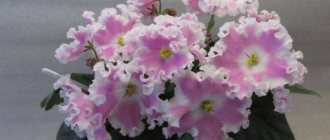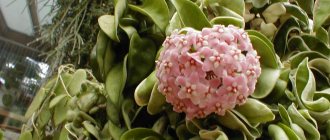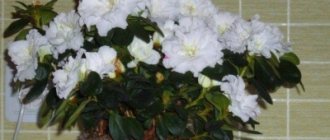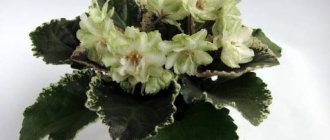What types of palm trees are there?
Let's take a closer look at the popular types of indoor palm plants and their features.
- Howea Forster...
- Hovea Belmora...
- Umbrella palm...
- Hamedorea graceful or bamboo palm...
- Cat palm...
- Rapis tall...
- Fishtail or soft caryota...
- Kariota pruriens
Apr 29
2015 Interesting materials:
How to calculate the average salary for an employment service? How to calculate the average salary for an employment center? How to sow mustard for fertilizer? How can I view my browser history if it has been cleared? How to see who is connected to iPhone? How can I see who is connected to my Beltelecom Wi-Fi? How to see who is connected to WiFi TP Link? How to set a high priority for a game? How to hang curtains If there is no room for a curtain rod? How to run in the morning to lose weight?
Characteristic
Dipsis, also called chrysolidocarpus or areca, belongs to the Palm family. In nature, this crop grows in tropical rainforests of some parts of Asia, Africa and Oceania.
But Madagascar is considered its homeland, although no more than 150 specimens remain on the island. The plant gained fame in the late 1980s when NASA research proved that it is an excellent air filter and humidifier.
This multi-stemmed palm reaches up to 12 m in height. It consists of a mother stem that produces numerous offspring, which are collected in a dense group of 3-20 plants. Each stem reaches up to 12 cm in diameter. They are initially smooth, but over time become scarred by fallen leaves, making them look like bamboo.
The arched, feathery leaves of dipsis fit tightly to the stems and reach up to 3 m in length. The petioles are painted golden yellow, and the plates themselves are emerald green. The Dipsis genus consists of 150 plant species. But only 3 species are cultivated at home.
Areca tristamen
The palm tree, growing up to 3 m in height, can consist of several trunks. They are covered with ring-shaped scars and reach up to 5 cm in diameter. The leaves of the crop are pinnate and straight. They reach up to 90 cm in height and about 3.5 cm in width. The plant blooms with fragrant, white buds. Palm trees can only be grown in warm rooms.
Areca catechu
In nature, the palm reaches up to 25 m in height and about 12 cm in diameter, but at home its dimensions are more modest. The feathery leaves of the crop have a curved shape. They can reach up to 180 cm in length.
Moreover, they consist of densely spaced leaves, 40 cm long and about 3 cm wide. It blooms with small white buds that emit a pleasant aroma. After flowering, fruits with yellow-red seeds are formed in the axils of the leaves.
Dipsis yellowing
The most common palm tree. It consists of several thin stems reaching up to 10 m in height. They are covered with ringed scars. The leaves of the palm are feathery and curved. They are colored green and can grow up to 150 cm in length. Moreover, each of them consists of tightly adjacent leaves with a width of up to 3 cm.
Possible diseases and pests, ways to get rid of them
With excessive watering, as well as the use of cold water, dipsis can develop root rot. The disease can be recognized by the brownish-red spots that form on the leaves. Over time, they increase in size and merge with each other. The palm tree is gradually withering.
Root rot must be treated immediately, otherwise it will lead to the death of the plant. To do this, you will need to transplant the crop into a new substrate and flowerpot, removing damaged roots in the process. Next, the palm tree should be sprayed with a solution of a fungicide, for example, Diskor or Fitosporin.
Of the pests, dipsis is bothered by the following insects:
| Signs | Control measures | |
| Mealybugs | Pests look like small cotton balls and leave behind a waxy coating. And their vital activity stops the growth and development of the palm tree. | You will need to remove pests using a cotton swab dipped in alcohol or soapy water. Then the plant needs to be sprayed with the insecticide “Aktellik”, “Biotlin” or “Fitoverm”. |
| Shields | Insects often accumulate in the axils and on the undersides of leaves. After their bites, small brown spots form, around which the tissue begins to die. | Adult insects should be removed manually using a soap solution. Then the plant, soil, as well as the surface of the pot must be treated with Aktara, Mospilan or Intra-vir insecticides. |
| Whitefly | Small moths that look like moths. As a result of their vital activity, yellow spots appear on the leaves, and as a result they curl up and die. | You can get rid of the pest using a soap solution. In case of severe damage, you will need to treat the palm tree with the Actellik insecticide. |
Dipsis will be an excellent interior decoration, because it looks very impressive. It also perfectly purifies the air, removing harmful impurities from it. But the plant has many disadvantages.
First of all, it can only be grown in spacious rooms. He will also need to provide careful care and create a certain microclimate, which at home is associated with many difficulties.
Favorable conditions for growing dipsis
Neodypsis loves places with a lot of diffused light. At the same time, the palm tree feels great in partial shade, which is why it perfectly complements the design of residential premises. The shoots of a young plant quickly stretch in the direction of the light source, so in order for the dipsis to look harmonious and its leaves to show an equally lush shape on all sides, it is necessary to turn the palm with the other side in relation to the light once every 7–10 days.
Dipsis leaves perceive direct sunlight negatively, so in the summer, when the plant is exposed to the open air, it should be protected from the harmful effects of ultraviolet radiation. Otherwise, the thin palm leaves will turn yellow and dry out.
It is important to know that shoots and leaves that have begun to wither do not need to be torn off, since neodypsis will select the remaining nutrients from them until the last moment. Only completely dried leaves and shoots can be carefully separated, being careful not to damage the areas where they were attached to the trunk. As the leaves die off, an original textured pattern appears on the trunk, which looks very beautiful.
Chrysalidocarpus propagation
As they grow older, bushy chrysalidocarpus are most easily propagated by simple division. Large palm trees can be divided into several groups or simply separate individual shoots.
This palm tree is grown less frequently from seeds. Surface sowing in a slightly moistened sandy substrate under film or glass requires several months of waiting for germination. The ideal germination temperature is about 25-30 degrees Celsius. Young plants will need protection from fluctuating conditions and ideal care. And even in this case, the palm tree will not begin to bush soon.
Description of neodypsis
In their historical habitats, representatives of the genus Dipsis are multi-stemmed or single-stemmed, growing up to 10–12 m, and sometimes more. In indoor floriculture, palms of this genus are not so large and grow to a height of up to 3 meters, pleasing the eye with beautiful openwork leaves.
Individual species of dipsis are quite diverse and among the predominant number of single-stemmed ones there are so-called reed palms. They are exotic bushes with multiple leaves that grow directly from the ground. Also, the genus Neodypsis contains original species that look like full-fledged palm trees with a beautiful crown and textured trunk.
Indoor representatives of the Dipsis genus always look very impressive and at the same time are absolutely unpretentious to the conditions. On oblong, thin stems there are wide pinnate leaves, consisting of paired lanceolate leaves 1–2 cm wide. In ordinary species, the number of such pairs reaches 5–6 dozen, and the leaves themselves reach 1 m in width and up to 3 meters in length.
When grown in residential premises, neodypsis almost never blooms, only in greenhouses or winter gardens. Flowers are formed in the axil of the leaf and are a paniculate inflorescence consisting of separate groups. Each of them has 1 female and 2 male flowers. The latter self-pollinate the female flower and soon yellowish fruits appear on the palm tree.
Caring for chrysalidocarpus at home
Chrysalidocarpus reacts negatively to complete drying of the soil, interruptions in watering, and waterlogging. Difficult watering combined with spraying and the need to frequently adjust feeding make it a far from simple plant.
Watering and air humidity
During the period of active growth, it is better to drain the water released into the trays 5-10 minutes after watering, allowing the substrate to dry by 3-4 cm before the next procedure. By winter, watering is reduced, drying the soil 6-7 cm deep, reducing the amount of water used . The approximate frequency of watering for chrysalidocarpus is up to 3 times a week in summer and 1 time a week or slightly less often in winter. The water should be soft and slightly lukewarm.
Chrysalidocarpus loves high air humidity. The minimum indicators for this palm tree are 65%. The care program must include spraying as often as possible in the summer and during the heating season. But even with spraying several times a day, it is worth remembering that an optimal environment can only be created using a tray with wet pebbles or expanded clay and installing a humidifier.
Chrysalidocarpus does not tolerate pollution. Since the plant’s fronds are quite fragile and easily injured, wiping the leaves with a soft cloth or sponge is not an easy task; it is much easier to wash them with a warm shower.
Chrysalidocarpus loves high humidity
Top dressing and fertilizer composition
The frequency of fertilization for chrysalidocarpus should correspond to its growth rate. If the palm tree is actively developing, then it is fed every 2 weeks during spring-summer and, if growth does not stop, once a month with a half dose during the period of conditional dormancy. If there are any problems with the health of the plant, fertilizing should be stopped immediately.
Chrysalidocarpus love organic fertilizers; for them, you can use universal biofertilizers or special fertilizers for palm trees, or, in extreme cases, for decorative foliage plants with a complex composition and microelements.
Trimming and shaping chrysalidocarpus
All pruning on this palm tree comes down to removing damaged or drying parts. As with all palm trees, pruning on chrysalidocarpus must be done carefully, without affecting living tissue, leaving a thin dry stripe-edge.
Transplantation, containers and substrate
It is best not to replant this type of pinnate palm before active growth begins. Transplanting in March, which is typical for most indoor plants, is too early for chrysalidocarpus. Yes, and you don’t need to replant every year, but only after signs of outgrowing the pot appear, the roots appear in the drainage holes. In years when replanting is not needed, the top layer of soil is simply replaced with fresh substrate.
The choice should be made in favor of a loose, breathable, nutritious, but also moisture-intensive substrate. Special substrates for palm trees, soil mixtures from leaf and turf soil with the addition of humus and coarse sand or perlite are preferred, but complex mixtures based on high-moor peat are also acceptable. Additional charcoal and perlite are welcome. The permissible pH value for soil is from 5.0 to 7.0.
Chrysalidocarpus require heavy, classically proportioned floor vases or tubs. For young plants, they also choose pots with a height slightly larger than the diameter, the size of the roots, with an increase of 2-3 cm. Large drainage should be placed at the bottom of the container.
Chrysalidocarpus carefully roll over, keeping an earthen lump around the roots. When planting, it is better to avoid deepening the base of the stems; if there are problems with watering, you can try to raise the level, exposing the “bottoms”. The palm tree usually does not survive complete removal of the soil.
Chrysalidocarpus reacts to almost any problems with conditions or care in almost the same way - by drying out the leaves











